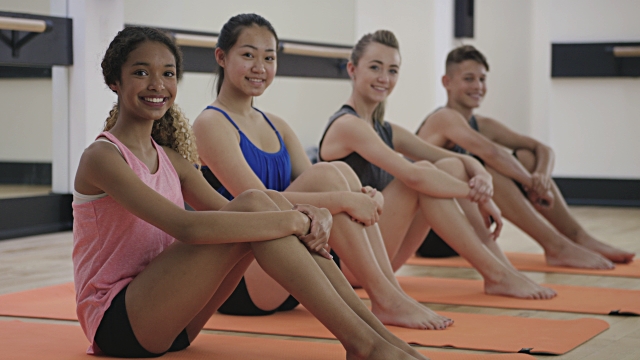
Parents should encourage their kids to perform different youth training activities. According to a systematic review, it is recommended that youths have an average of no less than 60 minutes of moderate intensity physical activity each day. More vigorous intensity activities like muscle and bone strengthening activities should be included 3 or more times per week. They also added that majority of the physical activity should be aerobic activities.
Age-Appropriate Activities
Studies showed multiple evidences that the youth should perform 60 minutes or more of moderate to vigorous physical activity every day. Youth training activities must be developmentally appropriate, enjoyable and varied. The best way for your kids to engage in exercise is to incorporate it in their daily activities and make it a fun opportunity rather than a chore to finish. Different activities work for different age groups so it is important to determine which activities are appropriate for your kid’s age and capabilities.
School-age
Commitment and interest go with ability. Traditional sports and playing outdoors are both great opportunities for exercise. What’s most important in school-age youth is the kind of activity they truly enjoy. When kids enjoy what they do, they are more likely to excel at it and get motivated to do more of it. Communities and schools often have aerobic activities like soccer and T-ball which are great opportunities for your kid to get some aerobic exercise while meeting new friends and having fun.
Teenagers
School sports and after-school activities like skating or yoga are great exercise for teens. Because of the numerous choices teens have it is important to ensure that their chosen physical activity are planned to accommodate commitments and responsibilities at home, in school and in the community.
Benefits of Youth Training
Exercise is not only important to adults but also in the youth. Growing numbers of research point to great benefits of youth training on kids’ well-being. Kids who regularly exercise are known to have stronger bones and muscles, have leaner bodies with less fat, have improved mood, good academic performance, better outlook on life, improved sleep and wake cycles, and have lower risk of developing diseases. Below are the benefits of youth training:
Academic performance improves with appropriate youth training. Various studies from 2009, 2011 and 2015 found that a 20 minute walk improved scores in arithmetic, reading and spelling. A 2015 study showed that 4 sessions a week of high intensity PE for 4 months led to better cognitive ability score and higher grades at school
Endurance develops when kids get aerobic exercise. Basketball, bicycling, skating, soccer, swimming, and running are great examples of aerobic activity. Their hearts beat faster and their breaths are deeper during aerobic activity and when done regularly for a long time, it strengthens the heart and improves circulation.
Flexibility improves with exercises like stretching by allowing joints and muscles to move easily with their full range of motion. Practicing a split or doing a cartwheel are great activities that can improve their flexibility. Teaching them proper stretching exercises and the correct form also help.
Strength can be enhanced with properly supervised weight training. When done properly, it is a safe and helpful preparatory activity for sports. Climbing, wrestling and head stands work great for muscle toning and enjoyable as well. The Canadian Society for Exercise Physiology supports resistance training in the youth as a relatively safe exercise to improve overall health when done with proper training methods. A resistance training program that is within a youth’s capacity with gradual progression under supervision can lead to health and functional benefits like endurance, flexibility, strength, balance, coordination and power.